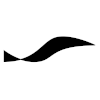3D Printing
Appearance
Introduction
Here you can find useful bits of information related to 3D printing with the Fused Deposition Modeling (FDM) method. My 3D printer is an Ultimaker 2+ and therefore most of the information will only apply to that model.
There are various 3D Printing Materials, which determine the chemical and physical properties of the printed objects and affect how you model and print the objects.
Miscellaneous Tips
- Printing material needs to be stored dry! Put your unused roll in an airtight zipper bag and throw in a silica gel pack.
- ABS prints requires an enclosure that keeps the heat inside the print chamber.
Software
CAD software
- FreeCAD is a well-known open-source CAD program that I use.
- Fusion 360 by Autodesk is free to use for hobbyists.
- Blender is a 3D modelling application for artists but can be used as a CAD tool if you are willing to deal with meshes instead of the higher-level construction logic, which a proper CAD tool translates into meshes for the purpose of rendering it onscreen.
Postprocessing 3D Models for Printing
- meshmixer by Autodesk is a mesh manipulation tool and useful for creating support structures.
- Cura by Ultimaker is a slicer software that generates instructions for the printer from 3D models in STL format.
Finding 3D-printable Models Online
- Youmagine (backed by Ultimaker)
- Shapeways
- Thingiverse (backed by Makerbot)
G-code Editing
- The G-code used in Ultimaker printers (UltiGCode) is based on the RepRap G-code but with more settings moved from the slicer software to the printer hardware.
- List of Cura Settings used in G-code and stored in profile files with ini extension.
Assembling Printed Parts
Captive nuts and standoffs can be used to eliminate the need to tap screw threads in the material or bury nuts in the model while it is printed.
